In the diagram shown in figure. Match the following columns.
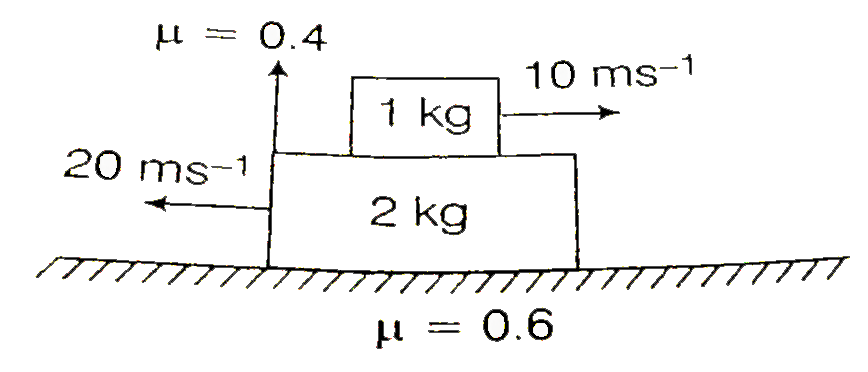
Colmun IColumn II(A) Absolute acceleration of 1 kg block(p)11ms−2(B) Absolute acceleration of 2 kg block(q)6ms−2(C) Relative acceleration between the two(r)17ms−2(s)None
The correct Answer is:A→s,B→p,C→s
Force diagram on both the blocks is as shown in figure

Topper's Solved these Questions
- LAWS OF MOTIONBOOK - DC PANDEYCHAPTER - LAWS OF MOTIONEXERCISE - Medical entrances gallery
39 Videos
- LAWS OF MOTIONBOOK - DC PANDEYCHAPTER - LAWS OF MOTIONEXERCISE - Assertion and reason
28 Videos
- KINEMATICS 1BOOK - DC PANDEYCHAPTER - KINEMATICS 1EXERCISE - INTEGER_TYPE
15 Videos
- LAWS OF THERMODYNAMICSBOOK - DC PANDEYCHAPTER - LAWS OF THERMODYNAMICSEXERCISE - Level 2 Subjective
18 Videos
Similar Questions
The acceleration of block is( g=10 ms-2)
View SolutionIn the diagram shown in figure, match the following columns (take g=10ms−2)

Column IColumn II(A) Normal reaction(p) 12 SI unit(B) Force of friction(q) 20 SI unit(C) Acceleration of block(r) zero(s) 2 SI unit
View SolutionIn the diagram shown in figure, match the following columns (take g=10ms−2)

Column IColumn II(A) Normal reaction(p) 12 SI unit(B) Force of friction(q) 20 SI unit(C) Acceleration of block(r) zero(s) 2 SI unit
View SolutionIn the diagram shown in figure, match the following (g=10m/s2)
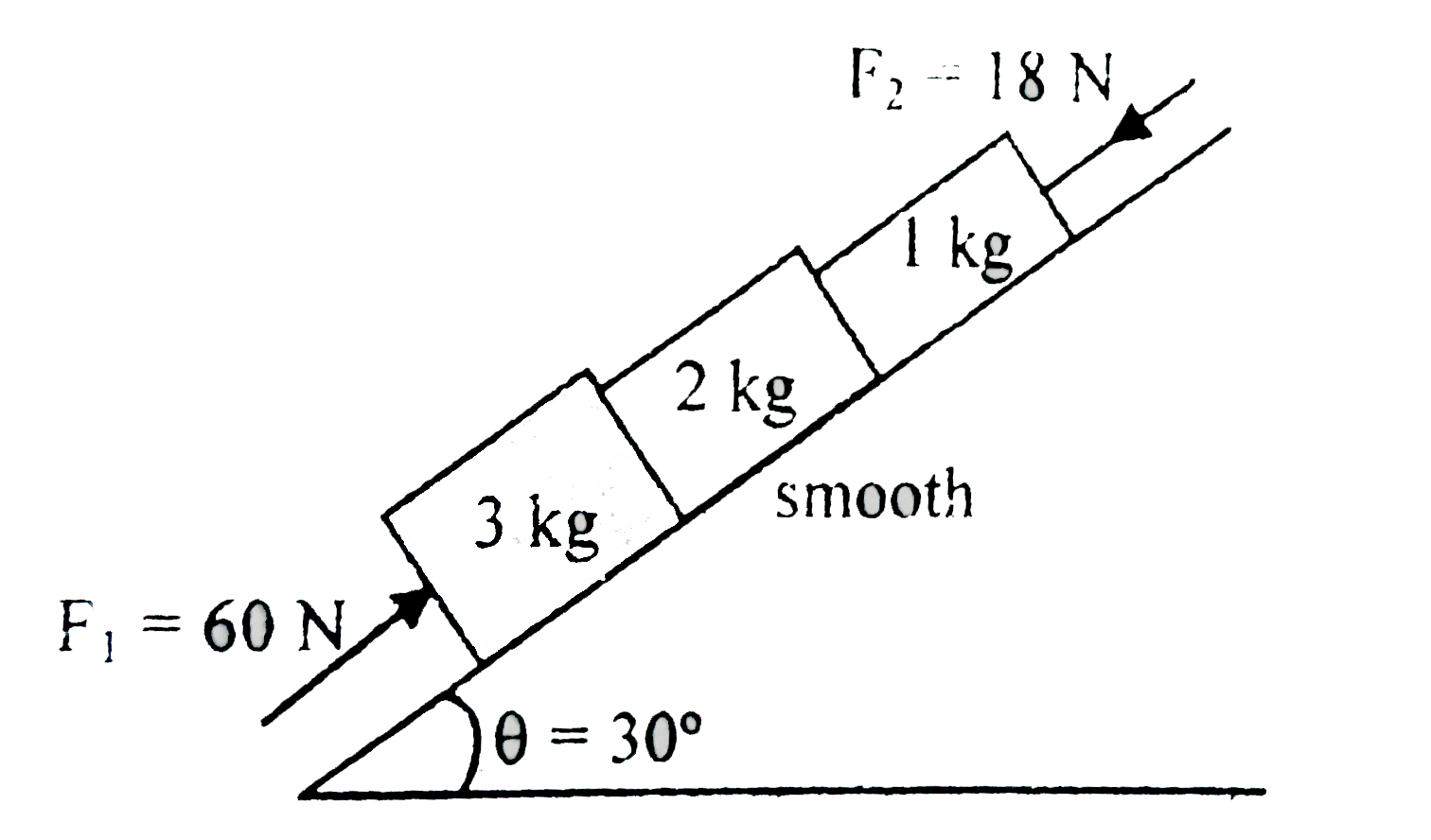
Column-IColoumn-II(A)Acceleration of 2kg block(P)8 Si unit(B)Net force on 3kg block(Q)25 SI unit(C)Normal reaction between 2 kg and 1kg(R)2 SI unit(D)Normal reaction between 3 kg and 2kg (S) 45 SI unit(T) None
View SolutionIn the diagram shown in figure, match the following (g=10m/s2)

Column-IColoumn-II(A)Acceleration of 2kg block(P)8 Si unit(B)Net force on 3kg block(Q)25 SI unit(C)Normal reaction between 2 kg and 1kg(R)2 SI unit(D)Normal reaction between 3 kg and 2kg (S) 45 SI unit(T) None
View SolutionIn the figure shown, acceleration of 1 is x (upwards). Acceleration of pulley P3, w.r.t. pulley P2 is y (downwards) and acceleration of 4 w.r.t. to pulley P3 is z (upwards). Taking upward +ve and downward -ve then
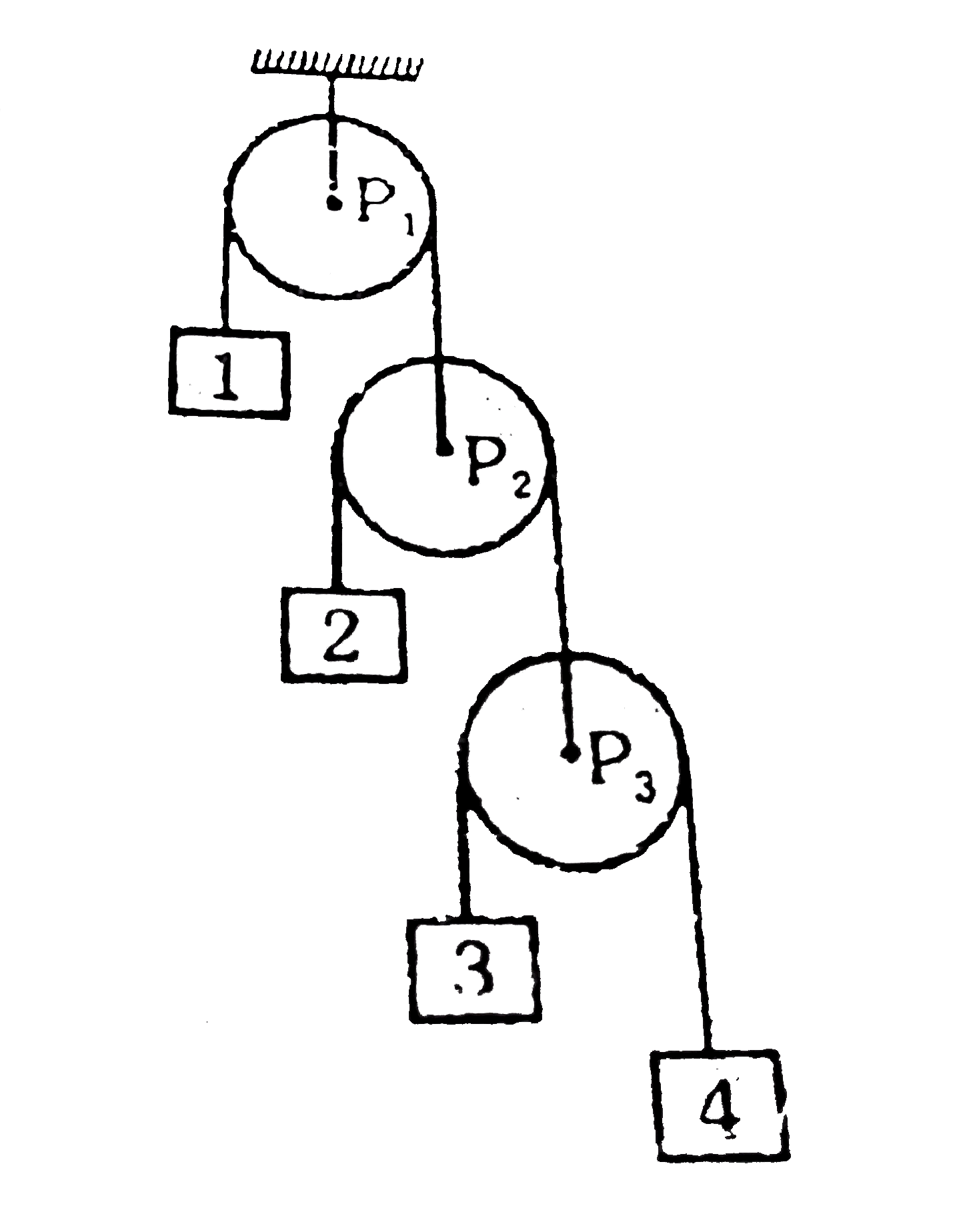
Column IColumn II(A)Absolute acceleration of 2(p)(y−x)downwards(B)Absolute acceleration of 3(q)(z−x−y)upwards(C)Absolute acceleration of 4(r)(x+y+z)downwards(s)None
View SolutionIn the diamram shown in figure , match the following (g=10m/s2)
 Column IColumn II(P) Acceleration of block (in )(1) 5(Q) Acceleration of block (in )(2) 50(R) Normal reaction between and (in N)(3) 45(S) Normal reaction between and (in N)(4) 60
Column IColumn II(P) Acceleration of block (in )(1) 5(Q) Acceleration of block (in )(2) 50(R) Normal reaction between and (in N)(3) 45(S) Normal reaction between and (in N)(4) 60
View SolutionIn the figure (g=10m/s2 ) .Acceleration of 2kg block is :
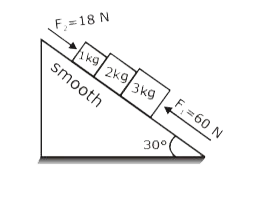
View SolutionIn the diagram shown in figure, all pulleys are smooth and massless and string are light. Match the following columns.
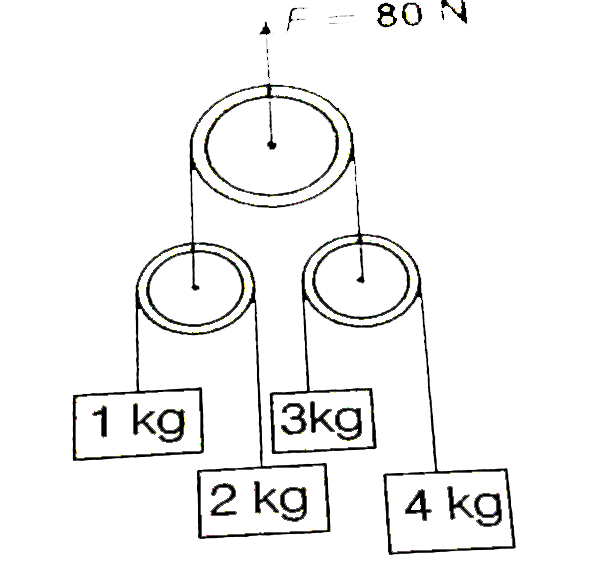
Column IColumn II(A) 1kg block(p) will remain stationary(B) 2 kg block(q) will move down(C) 3 kg block(r) will move up(D) 4 kg block(s)5ms−2(t)10ms−2
View SolutionIn the diagram shown in figure, all pulleys are smooth and massless and string are light. Match the following columns.

Column IColumn II(A) 1kg block(p) will remain stationary(B) 2 kg block(q) will move down(C) 3 kg block(r) will move up(D) 4 kg block(s)5ms−2(t)10ms−2
View Solution
